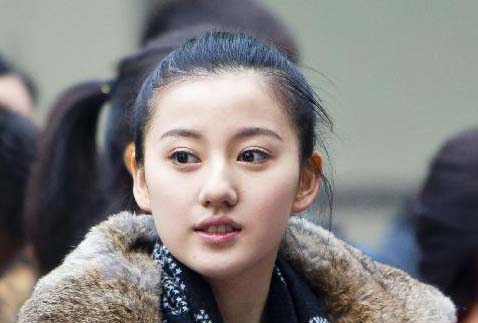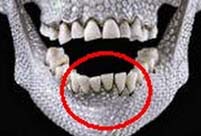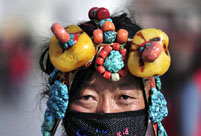 Deng Xiaoping: 'I have a clear conscience all my life'
Deng Xiaoping: 'I have a clear conscience all my life'
 Xi Jinping: 'The people are our strength'
Xi Jinping: 'The people are our strength'
 Amazing cliff diving in cold winter
Amazing cliff diving in cold winter
 Enjoy Sochi 2014 in slow motion
Enjoy Sochi 2014 in slow motion
 University student sentenced to death for poisoning roommate
University student sentenced to death for poisoning roommate
 Chinese lunar New Year celebrated in San Francisco
Chinese lunar New Year celebrated in San Francisco
 Taiwan Lantern Festival 2014
Taiwan Lantern Festival 2014
 Haiyang Yangge: make up
Haiyang Yangge: make up
 China's top 10 richest cities
China's top 10 richest cities
This is in sharp contrast with other emerging markets and key Asian currencies, most of which have depreciated significantly.
As a result, China's trade-weighted exchange rate against a basket of its major trading partners' currencies has appreciated by almost 20 percent in real terms since 2010 and by more than 10 percent in 2013, she said.
The impact of yuan appreciation in 2013 is set to be felt in 2014, limiting the strength of China's export recovery this year. As such, the era of steady yuan appreciation may be drawing to a close, Wang said.
"The shift away from the previous steady pace of appreciation could unwind 'hot money' inflows," she said.
This will not necessarily lead to a credit tightening, but it does pose challenges for liquidity management by the People's Bank of China (PBoC, central bank), she added.
Wang Jun, senior foreign exchange strategist with HSBC, said the PBoC has been fixing the exchange rate between the U.S. dollar and the yuan higher after the Chinese New Year holiday.
"This suggests that the central bank wants to take advantage of the relative calmness in the external market to reduce RMB appreciation expectations," Wang Jun said in a research note.
Unsatisfactory macro economic data in January and February may have also contributed to the depreciation of the yuan.
The resumption of the usual softer seasonality in China's trade balance in February and March may have reduced spot U.S. dollar supply from exporters in the Chinese mainland, Wang said.
The most recent catalyst is related to the HSBC China flash manufacturing PMI released on Feb. 20, which hit a seven-month low.
Wang Jun maintained that the central bank could carefully calculate the USD-RMB fix after the market's aggressive appreciation expectations have eased.
In the past, the USD-RMB fix has tended to move higher going into or during the annual meeting of the National People's Congress in early March, but most of the time would fall after that meeting, Wang Jun added.

 Chinese Dream: the Chinese Spirit and the Chinese Way
Chinese Dream: the Chinese Spirit and the Chinese Way 51 bronze sacrificial utensils unearthed in Shaanxi province
51 bronze sacrificial utensils unearthed in Shaanxi province Most gorgeous female celebs in Chi-pao
Most gorgeous female celebs in Chi-pao Second round of test kicks off at Beijing Film Academy
Second round of test kicks off at Beijing Film Academy Ancient Qiang people had vertically grown teeth
Ancient Qiang people had vertically grown teeth Top 10 Chinese youth’s favorite seaside destinations
Top 10 Chinese youth’s favorite seaside destinations Traditional Tibetan clothing tailors
Traditional Tibetan clothing tailors In photos: Unveiling Taishan station
In photos: Unveiling Taishan station Beautiful moments of family reunion
Beautiful moments of family reunion Chinese warplanes C919 to appear at Singapore Airshow 2014
Chinese warplanes C919 to appear at Singapore Airshow 2014 Ruins of Shang Dynasty's structure unearthed in Shaanxi
Ruins of Shang Dynasty's structure unearthed in Shaanxi  Intercity high speed train in operation
Intercity high speed train in operation Severe coldness freezes large parts of China
Severe coldness freezes large parts of China  Beautiful moments of Sochi
Beautiful moments of Sochi  It's not just performing this year
It's not just performing this yearDay|Week|Month